
























































Attending the Applied Power Electronics Conference
(APEC) this spring certainly provided me with deeper insights into the world of the power electronics industr y. An annual event that puts specific focus on the practical and applied aspects of new power components –APEC delivered just that with many exhibits, expert-led courses and special presentations. The one definable take-away for me –was that Gallium nitride (GaN) power semiconductors were the stars of the show.
In a relatively short period of time, GaN has created an innovative shift throughout the power electronics world. For decades, silicon-based MOSFETs (Metal Oxide Semiconductor Field Effect Transistors) have been an integral part of the everyday modern world that helps convert energy to power.
However, we are reaching the theoretical limit on how much silicon MOSFETs can be improved, how power-efficient they can be. With increasing power density and efficiency requirements and environmental pollution regulations trends, silicon is f ailing to meet these modern demands.
Replacing silicon
GaN is on the rise to replace silicon as the backbone of power switching technology, as it can meet the growing needs with better power systems efficiency, performance and system cost. As most in design circles are aware, the GaN semiconductor devices market continues to see increasing demand – driven mostly by the rise in use of power electronics across various design
applications and many industries - such as automotive, aerospace, defense and consumer electronics.
GaN devices are created by depositing a compound called gallium nitride on silicon to produce components that are smaller and lighter than existing silicon-only transistor chips, but also faster and more energy efficient as they convert high-voltage power into usable currents within machines.
GaN devices offer several advantages over traditional silicon-based devices, such as higher power density, higher efficiency, and faster switching speed, making them suitable for power electronics applications.
Additionally, the growing adoption of renewable energy sources and the increasing focus on energy efficiency have also contributed to the growth of the market. The rising demand for wireless charging devices and electric vehicles is expected to further drive the market growth.
Adding to the GaN intrigue from a localized level, one of Canada’s most promising semiconductor makers, GaN Systems Inc., was purchased by German chip giant Infineon Technologies AG this spring. Sold for the pricetag of US$830-million, the Ottawa-based leader in developing GaN-based solutions for power conversion – will “significantly accelerate Infineon’s GaN roadmap, based on unmatched R&D resources, application understanding and customer project pipeline,” according to Infineon CEO Jochen Hanebeck.
In an industry forecast delivered earlier this year by GaN Systems, it stated that the electronics industry is at the inflection point in GaN development. The power semiconductor has established itself as a preferred product solution across multiple
market segments.
Purely from a designer’s perspective, GaN semiconductors h ave several advantages over traditional silicon-based semiconductors in electronic designs. Some of the biggest advantages of GaN semiconductors include:
• Higher efficiency: GaN semiconductors can operate at higher voltages and temperatures with lower on-state resistance and switching losses, resulting in higher efficienc y and lower power consumption.
• Faster switching speed: GaN devices have faster switching speeds compared to traditional silicon-based devices, allowing for higher frequency operation and smaller, more compact designs.
• Higher power density: GaN devices can handle higher power densities than traditional silicon-based devices, enabling more power to be packed into smaller footprints.
• Better ther mal conductivity: GaN has higher thermal conductivity than silicon, improving heat dissipation.
• Wide operating temperature range: GaN devices can operate at higher temperatures than silicon-based devices, making them suitable for harsh environments.
According to several market reports, the unique characteristics and advantages of GaN de vices make them highly attractive, in addition to their increasing cost-effectiveness.
It goes to show – designing with GaN makes powerful statement.
STEPHENLAW
Editor slaw@ept.caCanada’s information leader for electronic engineers and designers
MAY/JUNE 2023
Volume 45, Number4
READER SERVICE
Print and digital subscription inquiries or changes, please contact
Angelita Potal
Tel: (416) 510-5113 Fax: (416) 510-6875
Email: apotal@annexbusinessmedia.com
Mail: 111 Gordon Baker Rd., Suite 400 Toronto, ON M2H 3R1
EDITOR Stephen Law slaw@ept.ca · (416) 510-5208
WEST COAST CORRESPONDENT Sohail Kamal · sohail@nextgear.ca
SENIOR PUBLISHER Scott Atkinson satkinson@ept.ca · (416) 510-5207
ACCOUNT MANAGER Joanna Malivoire jmalivoire@ept.ca · direct 866-868-7089
SALES MANAGER Chander Verma cverma@annexbusinessmedia.com cell 437-218-0941
ACCOUNT COORDINATOR Shannon Drumm sdrumm@annexbusinessmedia.com
MEDIA DESIGNER Lisa Zambri lzambri@annexbusinessmedia.com
AUDIENCE DEVELOPMENT MANAGER Anita Madden amadden@annexbusinessmedia.com (416) 510-5183
GROUP PUBLISHER Paul Grossinger pgrossinger@annexbusinessmedia.com
PRESIDENT/COO Scott Jamieson sjamieson@annesbusinessmedia.com

EP&T is published eight times per year by ANNEX BUSINESS MEDIA 111 Gordon Baker Road, Suite 400 Toronto, ON M2H 3R1 Tel (416) 442-5600 Fax (416) 510-5134 annexbusinessmedia.com
SUBSCRIPTION RATES
Canada – $58.50 one year; $94.00 two years USA – $134.00 (CAD) per year
International – $183.50 (CAD) per year
Single copy – Canada $15 ISSN 0708-4366 (print) ISSN 1923-3701 (digital)
PUB. MAIL AGREEMENT NO. 40065710
Return undeliverable Canadian addresses to: EP&T Circulation Department, 111 Gordon Baker Rd. Suite 400, Toronto, ON M2H 3R1
© 2023 EP&T. All rights reserved. Opinions expressed in this magazine are not necessarily those of the editor or the publisher. No liability is assumed for errors or omissions or validity of the claims in items reported. All advertising is subject to the publisher’s approval. Such approval does not imply any endorsement of the products or services advertised. Publisher reserves the right to refuse advertising that does not meet the standards of the publication. Occasionally, EP&T will mail information on behalf of industry-related groups whose products and services we believe may be of interest to you. If you prefer not to receive this information, please contact our circulation department.
PRINTED IN CANADA


Toronto-based medtech biz MOLLI Surgical is pushing the boundaries of precision surgery with the launch of two new productsMOLLI 2 and MOLLI re.markable. Paving the way for next gen healthcare, one device ensures cancerous lesions are accurately marked. The units elevate the patient experience, refine precision surgery, and aim to boost physicians’ confidence.
“The release of these two new products demonstrates our continued rapid pace of evolution in our technology,” added Ananth Ravi, president & CEO of MOLLI Surgical. “Our approach to innovation has always kept patient experience at the forefront.”



The University of Waterloo and Velocity are officially expanding their presence in downtown Kitchener at the new Innovation Arena building on Waterloo’s Health Sciences campus.
The Innovation Arena will feature collaborative spaces to inspire partnerships and facilitate exchanges between businesses, founders, researchers and community partners. The space will also be the new home of Velocity, Waterloo’s signature entrepreneurship program. The new, purpose-built space will allow Velocity to streamline commercialization, fast-track
2018 to engineer its first vehicle, a 4x4 fossil-fuel powered vehicle called the Grenadier.
Magna is also working to increase its EV-related production in Canada, announcing in February a $471 million investment across six Ontario locations to expand its EV parts capacity.
entrepreneurs, and support the global economy.
This partnership will strengthen the Canadian tech ecosystem, specifically in the health and medtech sector, by supporting innovators and entrepreneurs from start to scale, providing companies with business, clinical, regulatory, and fundraising expertise and access to labs, facilities, and equipment. Parts of the funding will be allocated to lab equipment for Waterloo’s Innovation Arena.
Magna International Inc. will engineer and build electric off-road vehicles for U.K.-based industrial conglomerate Ineos Group Ltd. The contract indicates that the vehicles will be produced at its facility in Graz, Austria with a 2026 expected start. Magna began working with Ineos in
Ford Motor Co. has revealed details of its plan to spend $1.8 billion an its Oakville Assembly Complex to turn it into an electric vehicle production hub. The automaker says it will start retooling the Ontario complex in the second quarter of 2024 and being producing electric vehicles in 2025.
General Motors is already producing electric delivery vans in Canada, but Ford says this is the first time a fullline automaker has announced plans to produce passenger EVs in Canada for the North American market.
Ford says the transformation of the Oakville site, to be renamed the Oakville Electric Vehicle Complex, will include a new 407,000 squarefoot battery plant where parts from U.S. operations will be assembled into battery packs.


Boréas Technologies, a Bromont-based developer of low-power piezo dr ivers, is entering mass production with three major original equipment manufacturers (OEMs) in the PC and IoT market.
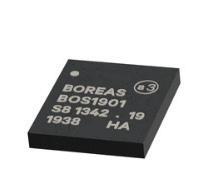
The design wins with three major brands will allow Boréas Technologies to bring its cutting-edge technology to a broad audience and make a significant impact on the tech industry, according to Simon Chaput, CEO of Boréas Technologies. Chaput is confident that his firm’s piezo haptic solutions will quickly become a musthave feature for consumers and is excited to see its positive impact on the market.
“We are thrilled to be entering mass production with those major OEMs” Chaput said. “We believe that this technology has the potential to revolutionize the way people interact with their devices, and we are excited about the piezo haptic market growth that is happening.”
Intel and the Gordon and Betty Moore Foundation announced that company co-founder Gordon Moore passed away this March at the age of 94.
In addition to Moore’s seminal role in founding two of the world’s pioneering technology companies, he famously forecast in 1965 that the number of transistors on an integrated circuit would double every year – a prediction that came to be known as Moore’s Law.
“All I was trying to do was get that message across, that by putting more and more stuff on a chip we were going to make all electronics cheaper,” Moore said in a 2008 inter view.
With his 1965 prediction proven correct, in 1975 Moore revised his estimate to the doubling of transistors on an integrated circuit every two years for the next 10 years. Regardless, the idea of chip technology growing at an exponential rate, continually making electronics faster, smaller and cheaper, became the driving force behind the semiconductor industry
and paved the way for the ubiquitous use of chips in millions of everyday products.
The BOS1901 piezo haptic driver uses the state-of-the-art CapDrive technology circuit architecture.
With the aim to strengthen the resilience of the critical North American semiconductor supply chain - the BlackPearl group of companies, a global designer and manufacturer of electronic products, has reached a partnership with MiQro Innovation Collaborative Centre (C2MI), based in Bromont, Québec.
BlackPearl’s role is to assist the hundreds of companies within the C2MI ecosystem with development, commercialization of their products, as well as oversight and management of the SMT line in this unique stateof-the-art facility. C2MI is among the largest research and development centers in Canada dedicated solely to microelectronic systems. C2MI is at the core of many industrial sectors, integrating components essential to the use and deployment of digital technologies.
BlackBerry Ltd. has signed a deal to sell a portfolio of non-core patents related to mobile devices, messaging and wireless networking to Malikie Innovations Ltd., a newly formed subsidiary of Key Patent Innovations Ltd.
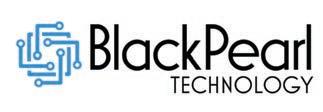
BlackBer ry will also receive annual cash royalties from the profits generated from the patents that will initially be capped at US$700 million. The cap is subject to an annual increase of an amount equal to four per cent of the remaining portion of the US$700 million that has not been paid to BlackBerry as of the date of the increase.
CELUS GmbH, a deep tech software company based in Munich, Germany,
has rolled-out a brand-new engineering platform with the mission to accelerate innovations in electronic design using smart algorithms and AI.
The platform, released this spring in a beta platform, is giving electronics designers the opportunity to pioneer the software, receive first-hand training from CELUS, and access the private beta community.
“Our solution uses a high level of automation to turn ideas into electronic designs, boosting collaboration and productivity,” says CELUS CEO Tobias Pohl. Suitable for engineers, designers, enthusiasts and hobbyists, CELUS has already opened up new levels of efficiency and quality assurance to electronic engineering professionals, distributors, and component manufacturers worldwide.
Montreal-based AI start-up Noze has developed leading technology to digitize the sense of smell. Powered by its platfor m, the breathalyzer detects breath biomarkers (VOCs). This enables rapid screening and diagnostics of infectious diseases such as malar ia and tuberculosis, that impact millions of people, particularly in developing countries.

Healthcare screenings and diagnostics are often time consuming, i nvasive, costly and not readily accessible to all population groups. To remedy this situation, Noze and the foundation have turned to a ground-breaking, yet largely overlooked source of health information: smell.
“Exhaled breath offers an incredibly revealing picture of a person’s cur rent health due to the efficient exchange that takes place between the blood and the air in the lungs,” says Karim Aly, CEO at Noze.
Noze
EPTECH is back! Connecting you with the electronics market throughout Canada.

Eptech is an efficient table top show, which allows exhibitors to easily set up their display and showcase innovative products to OEM’s throughout Canada.
Book today to to reserve a great position. Receive exclusive face-to-face networking opportunities with attendees including OEM’s, designers, engineers and project managers. Exhibitors also have the opportunity to host on-site seminars to discuss new products and solutions for electronics projects.
Book your space today
TO REGISTER VISIT:
Eptech.ca
SCAN HERE!
Vancouver
June 7
Montreal
September 6
Calgary
September 26
Mississauga
October 16

Hyper-focused on working closely with its customers, Brenco Industries has carved a niche for delivering tailored electrical enclosure solutions across Canada. The Delta BCbased manufacturer builds its end-product to match with each customer’s designs and material preferences.
West Coast Report recently had the opportunity to connect with Tyler McLeod, partner and sales manager of Brenco Industries, about the firm’s construction processes, material options, and impor tance of customer collaboration.
The construction process at Brenco begins with the customer’s requirements, which can range from a simple overall view to a detailed 3D model. The company creates individual drawings for each enclosure component, which are translated into CNC (computer numerically controlled) machine code through prog ramming software. This enables profile cutting machines, usually lasers, to cut the precise shape of each part from flat sheet metal.
If necessary, the flat parts are bent in a press brake, followed by a fabricator and/or welder assembling and welding the components together. Enclosures can consist of anywhere from five to a few hundred parts, depending on the design complexity.
Customers typically specify the material type they prefer, according to McLeod. “Mild steel is the cheapest, galvannealed steel offers some corrosion resistance, stainless steel offers more corrosion resistance, and aluminum is lighter,” McLeod says.
Electrical enclosures play a crucial role in ensuring safety, protecting equipment, and optimizing system performance
all the individual pieces, assembles them, and welds the parts together. Enclosures may have as few as five components or as many as a few hundred.
Alternative solutions
“Sometimes, a customer may come to our shop to inspect the finished product before it ships out. All of Brenco’s welders are CWB (Canadian Welding Bureau) certified,” explains McLeod. Electrical enclosures are only one portion of their business. They are also involved in other industries, such as construction, mining, oil and gas, ag riculture and transportation.
Brenco values collaboration with its customers, regularly discussing and working with their mechanical designer s to address their needs.
across various industries and applications. They act as a protective barrier, preventing accidental contact with live electrical components and reducing the risk of injury or electrocution.
Enclosures also shield sensitive equipment from environmental factors like dust, moisture and extreme temperatures, prolonging their lifespan and minimizing

system f ailures.
Using electrical enclosures often helps companies adhere to industry-specific safety standards and regulations, avoiding potential fines or legal issues. Enclosures facilitate organization and efficient cable management within systems, making maintenance, troubleshooting, and upgrades more manageable.
To support designers and engineers, customers provide Brenco with an overall view of the finished product with a few dimensions or a complete 3D model. Brenco then draws and details each individual component or panel of the enclosure. A fabricator and/or welder takes

“If a customer requests a detail or dimension that is not feasible, practical, or cost-effective, Brenco discusses alternatives and suggests more realistic or cost-effective solutions that still meet their needs,” says McLeod. “These discussions can occur at any stage, from design and quotation to drawing and detailing to the actual construction.”
With one of the largest selections of metal fabricating equipment in BC and more than 72,000-square-feet of production space, Brenco can handle projects of various sizes. The firm’s unique approach to designing and building electrical enclosures, commitment to quality control, and customer collaboration has contributed to their reputation as a dependable partner.
To learn more, visit brenco.com.
sohail@nextgear.ca
Apple announced a major acceleration of its work to expand recycled materials across its products, including a new 2025 target to use 100% recycled cobalt in all Apple-designed batteries. As well, magnets in Apple devices will use entirely recycled rare earth elements, along with all Apple-designed printed circuit boards which will use fully recycled tin soldering and gold plating.
Last year, the firm significantly expanded its use of key recycled metals, and now sources more than two-thirds of all aluminum, nearly three-quarters of all rare earths, and more than 95% of all tungsten in Apple products from recycled material. This rapid progress brings Apple closer to its aim to one day make all products with only recycled and renewable materials and advances the tech firm’s goal to make every product carbon neutral by 2030.
“Every day, Apple is innovating to make technology that enriches people’s lives, while protecting the planet we all share,” said Apple CEO Tim Cook. “From the recycled materials in our products, to the clean energy that powers our operations, our environ mental work is integral to everything we make and to who we are. So we’ll keep pressing forward in the belief that great technology should be great for our users, and for the environment.”
Apple has significantly expanded the use of certified recycled cobalt over the past three years, making it possi ble to include in all Apple-designed batteries by 2025. In 2022, a quarter of all cobalt found in Apple products came from recycled material, up from 13 percent the previous year. Cobalt is a critical material in the batteries used in most consumer electronics, including Apple devices, enabling high energy density while also meeting its standards for longevity and safety.The company’s use of 100% certified recycled rare earth elements has greatly expanded in the last year as well, going from 45% in 2021 to 73% in 2022.
As part of the accelerated new
timeline, all Apple-designed pcb boards will use certified recycled gold plating. This includes rigid boards, such as the main logic board, and flexible boards, like those connecting to the cameras or buttons in iPhone. Since pioneering an exclusively recycled supply chain for gold in the plating the main logic board for iPhone 13, Apple has extended the material’s use in additional components and products, including the wire of all cameras the iPhone 14 lineup, and printed circuit boards of its consumer devices. Apple is also working to encourage broader adoption of recycled gold for non-custom components across the electronics industry.
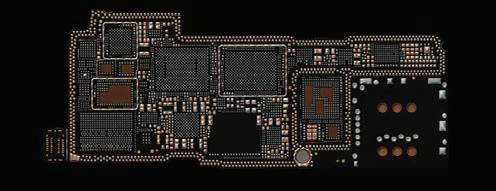
As Apple reduces its reliance on newly mined minerals, it is also pursuing ways to directly support communities whose livelihoods depend on mining. The company is partnering with experts such as the Fund for Global Human Rights to provide support for frontline human rights and
environmental defenders, including in the African Great Lakes region, as well as vocational education programs that enable members of local communities moving away from mining to build skills and pursue new opportunities.
Apple sources primary minerals responsibly and drives the highest level of human r ights and environmental standards across its supply chain. Apple was the first electronics company to publish a list of cobalt and lithium refiners in its battery supply chain, with cobalt in 2016 and lithium in 2020. In 2017, the company mapped its supply chain for rare earths. And since 2015, every identified smelter and refiner for tin, tungsten, tantalum, and gold has participated in independent third-party audits.
Apple’s work to pioneer new research and development for end-of-life disassembly and recycling has helped make this prog ress possible. Through extensive efforts including partnerships with leading research institutions and the Material Recovery Lab in Austin, Texas, Apple engineers and experts are developing innovative ways to give materials in Apple products new life, and helping inform design decisions that support disassembly and recovery.
The company’s iPhone disassembly robot, Daisy, separates batteries from other components, and enables specialty recyclers to recover cobalt and other materials, including lithium. Since 2019, Apple estimates that more than 11,000 kilograms of cobalt have been recovered from batteries extracted by Daisy and then returned to the secondar y market. Daisy also helps recover rare earth elements, which are largely lost through traditional electronics recycling processes.

Daisy is just one example of how Apple’s innovations in recycling and disassembly can drive industrywide change. The company’s Dave robot, now deployed with a recycling partner in China, can help further accelerate recovery of rare earth elements by disassembling Taptic Engines.


Our latest automated cell inserts solder or quick-disconnect contacts into IEC 60320 Sheet F and Sheet J outlets to compliment your C14 and C20 inlets. IEC 60320 cords and components are passports to exporting on a global scale. Currently IEC 60320 Sheet F and Sheet J outlets are available in black. Want to lock in your price for one year? Want them shipped when and where you need them? Try our worry-free scheduled orders!
Just as Interpower cords, cord sets, and other components, Sheet F and Sheet J outlets ship straight from the factory. Need 1-D or QR barcodes for easier warehousing? Customize cord lengths and colors for country-specific cords configured, tested, and ready to use out of the box!
“We test more than the standards require,” Interpower Product Development Manager Ron Barnett said. “We do so because it lends better reliability to our design.”
• No minimum orders
• Scheduled and blanket orders available
• World-class customer service from 7 a.m. to 6 p.m. CST
• In-stock cords ship same day
Our latest automated cell inserts solder or quick-disconnect contacts into IEC 60320 Sheet F and Sheet J outlets to compliment your C14 and C20 inlets. IEC 60320 cords and components are passports to exporting on a global scale. Currently IEC 60320 Sheet F and Sheet J outlets are available in black. Want to lock in your price for one year? Want them shipped when and where you need them? Try our worry-free scheduled orders!

Just as Interpower cords, cord sets, and other components, Sheet F and Sheet J outlets ship straight from the factory. Need 1-D or QR barcodes for easier warehousing? Customize cord lengths and colors for country-specific cords configured, tested, and ready to use out of the box!
“We test more than the standards require,” Interpower Product Development Manager Ron Barnett said. “We do so because it lends better reliability to our design.”
• No minimum orders
• Scheduled and blanket orders available
• World-class customer service from 7 a.m. to 6 p.m. CST
• In-stock cords ship same day
Higher power performance inside a smaller form factor is now required in a number of sectors, such as data center power supplies, automotive powertrain, battery management systems, grid energy storage, rail, emerging aircraft, and more.
The power-density advantages of smaller designs are evident in mobile deployments, but compact power electronics also have the potential to reduce overall system cost as smaller, more light-weight components can cor respond to lower capital and operating expenses. The added need for greater energy efficiency is being spurred by both an operational desire to lower costs and by regulatory demands around the world.
The design challenge is that the goal of reducing physical size often competes with the goal of increasing energy efficiency. For example, increasing the switching frequency of converter circuits allows the size of components such as inductors, transformers, and
capacitors to be reduced. That helps enable more compact devices at lower production cost. But, higher switching frequencies also generate additional heat and the risk of electromagnetic interference.

The effor t to boost device density and performance while reducing power consumption has led to research into unique two-dimensional solids with high carrier mobility and higher conductivity. While the desire for greener power generation solutions is spurring investigation into higher temperature superconductors and the power semiconductors essential to power conversion.
GaN & SiC
Traditional silicon technology is based on narrow bandgap material, which leads to undesirable c onductive leakages that become more pronounced with increases in temperature, voltage, or frequency. New wide-bandgap (WBG) semiconductors such as gallium nitride (GaN) and silicon carbide (SiC) have much higher power density, smaller
at the point of generation, transmission, and consumption.
size, better high temperature performance, higher frequency response, lower leakage, and lower ON resistance than silicon, all of which add up to greater operating efficiency.
GaN has driven a reduction in size while increasing power density, helping to improve everything from the battery charge time to power supplies and amplifiers. SiC metal-oxide-semiconductor field-effect transistor s (MOSFETs) are capable of operating at higher voltages and higher temperatures suitable for power transmission, large-scale HVAC equipment, and industrial systems.
To fully embrace these new opportunities, testing and validation engineers need to reduce and simplify their measures while also increasing accuracy.
There are three specific processes which can be improved when working with WBG devices:
DPT
The standard test method for
measuring switching parameters and evaluating the dynamic behavior of SiC and GaN MOSFETs is the double pulse test (DPT). DPT is performed using two WBG devices. One is the device “under” test (DUT) and the second “high” device is typically the same type. The inductive load is on the “high” device and used to replicate circuit conditions in a converter design. For the test, a power supply or source measure unit supplies the voltage, an arbitrary function generator (AFG) outputs pulses that trigger the gate of the MOSFET to start conduction of the current, and an oscilloscope measures the resulting waveforms.
Historically, it has been a time-consuming process to set up because function generator s do not usually
have a built-in way to configure and set up the test. Thankfully, newer AFGs include built-in software applications that enable DPT from a touchscreen interf ace.
I-V characterization
Similarly, current versus voltage (I-V) characterization to show the relationship between the current flowing through an electronic device or circuit and the applied voltage across its terminals has been a fundamental, but cumbersome method of under standing the potential of WBG semiconductors.
Today, many of the key measurements for characterizing WBG devices such as current vs. voltage testing, breakdo wn voltage testing, and leakage current testing are available
through graphical Source Measure Units (SMU) and semiconductor parameter analyzers with user interfaces and application software that makes the process much easier.

Finally, a typical switch-mode power supply might have an efficiency of about 87%, meaning that 13% of the input power is dissipated within the power supply, a significant portion is in the switching devices, usually MOSFETs or IGBTs. To reduce this loss, engineers may conduct floating differential measurements, such as high-side Vgs. These measurements, however, are difficult to make due to high frequency (fast turn on and turn off), and the presence of high common mode voltages (such as Vds) because oscilloscope probes do not have sufficient common mode rejection at high bandwidth.

This poor common mode rejection leads to the measurement being dominated by the common mode error instead of the actual differential signal. Isolated probes that do not derate with frequency at the operating requirements of GaN and SiC devices allow for more accurate differential measurements to precisely calculate and prove conduction losses, dead time losses, and switching losses.
The new challenges engineers face with WBG devices certainly do not outweigh the benefits. As additional research is being conducted on other materials, such as aluminum nitride (AlN), gallium oxide (Ga2O3), and diamond, engineers will likely find more opportunities to improve testing.
By better under standing why WBG devices are growing at scale, where they will be deployed, and how they are measured and validated, engineers can be prepared to take advantage of smaller designs and greater efficiency that multiple segments now require.
https://www.tek.com/en
Tektronix has more than 70 years of experience designing industry leading test and measurement equipment for the electronics industry.
Double Pulse Test (DPT) is the standard test method for measuring switching parameters and evaluating the dynamic behavior of SiC and GaN MOSFETsFigure 2: Double Pulse Test Circuit Figure 3: I-V Curve Tracer Configurations


Over the years, the cellular industry has introduced several wireless technologies designed to connect Inter net of Things (IoT) devices to the Internet. These cellular IoT technologies have included LTE Cat M, extended coverage GSM IoT (ECGSM-IoT), and narrowband IoT (NB-IoT). All were designed to minimize the added cost of cellular connectivity to maximize the cost-benefit of remote wireless access.
The latest and most powerful cellular IoT technologies to emerge is the first such technology capable of leveraging the power of 5G. The Third Generation Partnership Project (3GPP)’s Release 17 contains enhancements that enable reduced capability, or RedCap, devices to operate on 5G networks.
As the name implies, 5G RedCap devices connect to the Internet via 5G, but don’t have the full capabilities (and performance) of conventional devices like smartphones and other more advanced user equipment (UE) operating on 5G networks.

While RedCap devices such as wearables, sensors, surveillance devices, and other IoT equipment do not have the full throughput, bandwidth, and latency capabilities of the 5G specification, they typically have much more stringent power consumption and cost limitations. RedCap devices benefit from the scale of 5G deployments, but leverage fewer 5G capabilities for an optimum balance of features versus cost and power consumption.
3GPP specifies three use cases for RedCap devices: industrial sensors, surveillance devices, and wearables. 3GPP’s technical report (TR) 38.875 specifies the maximum data rate, end-to-end (E2E) latency, and service availability for each use case, as shown in Table 1.
To reduce complexity, cost, and power consumption, RedCap devices use fewer antennas than standard 5G
devices. This not only reduces cost, but also reduces the maximum number of multiple-input multiple-output (MIMO) layers. RedCap devices only support 2x2 MIMO for the downlink and single-input/output for uplink.
RedCap also limits device bandwidth capability compared to standard 5G UEs in order to limit power amplifier (PA) costs. RedCap devices use only bandwidths of 20MHz for frequency range 1 (FR1) and 100MHz for frequency range 2.
Another cost-saving enhancement introduced in 3GPP Release 17 for RedCap devices is support for half-duplex frequency division duplex (FDD) transmission. While half-duplex FDD significantly reduces cost by enabling RedCap devices to use switches rather than the duplexers required for full-duplex FDD, it does have some drawbacks. A RedCap device cannot perform both transmission and reception simultaneously. That’s because a device using half-duplex FDD:
* Will not detect scheduling
information for downlink and uplink in the same set of symbols.
* Can’t monitor downlink messages while configured in uplink mode.
*Cannot send uplink control information while monitoring downlink.
* In case of conflict, RedCap devices can decide what to do based on their par ticular implementation.
RedCap also implements several simplifications of the 5G specifications specially to increase power efficiency, minimize the power consumption, and extend the battery life of RedCap devices. For example, RedCap employs a reduced network monitoring scheme compared to the full 5G specification. RedCap devices limit the number of blind decoding and control elements monitored in the physical downlink control channel (PDCCH), reducing the amount of power required for these tasks.
Another power-saving simplification implemented by RedCap is e xtended discontinuous reception (eDRX). RedCap increases eDRX cycles when the device disconnects from the network or becomes idle, substantially prolonging the battery life of a RedCap device. Longer eDRX cycles are particularly valuable in specific use cases such as stationary wireless sensors, because increasing the eDRX cycles comes with the tradeoff of decreasing the mobility performance of the device. (Imagine a wireless sensor monitoring a railroad track that needs to only connect to the network periodically.)
RedCap also relaxes radio resource management (RRM) requirements for devices that are not located at the cell edge and introduces a radio resource control (RRC) inactive state, which allows the UE to make small data transmissions without transitioning the RRC-connected state.
The final aspect of RedCap
enhancements are simplifications put in place to reduce the complexity of RedCap devices. These enhancements can also reduce power consumption and device cost, but their primary purpose is to reduce the complexity of devices so that the RF components can fit in devices with very small or unconventional form factors (imagine, for example, wearable devices such as smart glasses).
RedCap simplifications to reduce device complexity include suppor t for only a single carrier (with no support for carrier aggregation), and support for single connectivity, enabling the RedCap device to operate in 5G standalone mode only. RedCap
mainly on the RedCap devices. But these elements have implications for 5G networks as well.
The biggest impact of RedCap on 5G networks is that the networks must adapt to the specific features of RedCap during the random-access process and when the device stays connected. New information elements (IEs) introduced for RedCap enable the bandwidth to adapt dynamically based on the actions taken by the device. For example, some of these new IEs pertain to the permission for a RedCap UE to camp in a cell or do so using half-duplex mode. (Some IEs are required to enable a RedCap device to connect to a cell; when these IEs
the application of RedCap relaxations for stationary devices and devices at the cell edge.
Some of the new IEs pertain to bandwidth part (BWP) configuration, which allows flexible spectrum use to achieve power savings by dynamically adapting the assigned bandwidth depending on what the UE is doing.
Low bandwidths impact the random-access channel (RACH) procedure used by the devices to access the network. The network can specify a BWP for RedCap devices or reduce the size of the BWP for these devices to attach to the network. However, this enhancement has limited value
to support RedCap devices require device engineers to check the compatibility of their devices to ensure connectivity. 5G device development engineers also need tools to check RedCap parameters for debugging pur poses.
Coming adoption of 5G RedCap devices is looking bright. Analysts expect the first 5G RedCap chipsets to begin appearing this year, with commercial product to enter the market in 2025. After 2026, the growth of commercial devices is expected to rise steeply, as users rush to adopt 5G-connected health wearables, wireless sensors for industrial data collection and asset-tracking, and surveillance devices for smart cities, factories, and more.
https://www.keysight.com/ca/ en/home.html

Most workers already know that proper grounding is a fundamental safety precaution for all kinds of electrical equipment. However, it’s less well known that while grounding can prevent and resolve many safety and power issues, improper grounding can create problems in data logging, data acquisition, and measurement and control systems.
One of the most common problems is known as ground loop feedback–an electrical phenomenon often resulting when different electrical circuits within a system and its peripherals have different connections or paths back to earth ground. Furthermore, this can also be a seasonal issue where problems come and go based on climatic conditions. This article serves as a brief introduction on the subject.
Ground loop feedback is a frequently encountered wiring issue arising when two or more connected electrical devices have more than one path to earth ground. Together, the separate paths form a loop. Electrical and magnetic fields which flow through the loop can generate unintended currents and voltages. Or, the ground points of the different devices may not be at the same potential voltage due to current and resistance in the ground path. The net effect is that while it is believed that the devices have the same ground reference point, in fact, they don’t, and this difference can appear as a simple offset in measured values or as signal noise that corrupts the devices’ normal operation.
Whether using different safety grounds or a safety ground and an earth ground, one of the most
common examples is buzzing/ humming sounds caused by currents induced in ground loops from mains (60Hz) ac power. In video applications, users will notice this feedback in the form of onscreen stripes, while computer and networking users can experience shutdowns or gaps in their data communication. Engineers and technicians collecting data often find that their readings and data show offsets that may change over time or noise in the measured values. In a worst-case scenario, this could cause an interruption in operations since many businesses heavily rely on PLCs and measurement systems for process and machine control, quality control, final test, etc.–yet ground loops often escape troubleshooting investigations and are equally neglected as a factor in many installations, arising later when electrical configuration or environmental conditions change.

Computers, data loggers, and data acquisition/control systems are normally connected to the ground through their ac power supply and the ground pin on the plug that goes into the wall outlet that shares the ground wire in common building wiring. These
devices may also be connected to each other by data communications cables. Ethernet cables are pretty good at maintaining ground isolation but serial communications cables, RS232 for example, have their own ground conductor. Now if the computer is plugged into an outlet in one area of the building and an RS232 device it is connected to is in a different area of the building it can create a multi-path connection and a ground loop.
Another example is a computer controlling a piece of manufacturing equipment. The computer is probably plugged into a standard 110VAC out but the manufacturing machine may require 220 or 480Vac so it is fed from a different breaker panel than the PC. Each breaker panel can have its own local ground stakes. Ideally, these ground stakes are supposed to be no resistance on that ground wire and no voltage drop. However, we have seen cases where, for whatever reason, there is resistance in the path to local ground. It could be a bad connection on one of the ground wires or it could be that at certain times of the year, the area around the ground stake
becomes very dry and there is some non-zero resistance to true earth ground. The result is that the computer and the machine it is controlling don’t share the same true ground which can result in erratic operation or even complete shutdown.
Ground loops can also affect low-level measurements through the effect of cabling. Normally, for sensitive measurements, a shielded cable will be used where the purpose of the shield is to protect the signal from any electromagnetic interference in the environment. For correct operation, the shield should be connected to the ground only at one end, this way electrical interference in the environment will be collected by the shield and carried to the ground keeping the sensitive signal clean. However, if by mistake the shield is connected to the ground at both ends it will immediately create a potential ground loop. Now any electrical interference in the environment will create a current in the shield which will then be coupled directly to the signal being measured in the form of electrical noise.
Increasingly, ground loop feedback poses a threat to industrial processes given the sensitivity of newer electrical equipment. As an example, the more recent variable frequency ac drives can be controlled by an external analog voltage signal. These drives may have a sensitive input front end and when encountering noise on the control signal, the drives can experience errors or even failure.
https://dataloggerinc.com/
UHS compact fast-acting SMT fuse is designed to safely interrupt high-energy overcurrent in the Safety Extra Low Voltage (SELV) range. Available in six current ratings from 50-100A at 50Vdc or 32Vdc, with a breaking capacity of up to 2000A. Operates in a wide range of temperatures, from -55°C to 125°C, making is suitable for use in various industries. Product is RoHS compliant, UL approved and bears REACH, CE, halogen-free, UKCA and China RoHS markings.

https://www.schurter.com/en


TDK LAMBDA
CCG6 and CCG10 isolated dc-dc converters are rated at 6W and 10W output, and are available in both through-hole and surface-mount packages. Both models comprise 36 voltage and current combinations with 3.3V, 5V, 12V, 15V and dual +/-12V and +/-15V outputs. The dual output models can also be configured to supply single 24V and 30V outputs. All models can operate from either 4.5 to 18V, 9 to 36V or 18 to 76Vdc inputs to support operation from 5V, 12V, 24V and 48V dc power sources.
https://www.us.lambda.tdk.com
CONXALL
Multi-Con-X line of high-performance, sealed circular plastic connectors includes a new adapter that allows the use of an extra-large backshell. Offered in a kit with one of two backshell sizes, or as part of a complete connector kit. Available options cover a wide cable diameter range from 10.2mm to 14.5mm. Includes screw-down cable clamp and elastomer strain relief.
https://www.sager.com/manufacturers/conxall


ROHDE & SCHWARZ
R&S EPL1000 EMI test receiver fully complies with CISPR16-1-1., while delivering quick, precise and compliant EMI measurements up to 30MHz. The fast time domain scan can check the complete CISPR bands A or B in a single shot. Built-in preselection ensures a high dynamic range and enables the acquisition of short pulses. Unit offers a spectrogram function, IF analysis and
further functions for detailed analysis.
Functions permit conducted voltage and current measurements in such applications as pre-compliance, pre-certification and IEC, EN, CISPR & FCC certifications.
https://www.rohde-schwarz.com/us
Bourns Inc., supplier of components for power, protection and sensing solutions, has acquired substantially all of the operating assets of Riedon Inc., manufacturer of resistors headquartered in Alhambra, CA.
Riedon’s products are key components used to help enhance efficiency and reliability in multiple market applications. The terms of the transaction were not disclosed.
“The acquisition complements Bourns’ existing resistors product line and enables us to offer our customers a broader and deeper range of resistive and current sense product solutions. It also puts Bourns in a favorable position to better meet the technology and advanced product demands of high growth markets,” said Al Yost, president of Bour ns Inc. “

Infineon Technologies AG and GaN Systems Inc. announced that the companies have signed a definitive agreement under which Infineon will acquire GaN Systems for US$830 million

GaN Systems is a global technology leader in the development of GaN-based solutions for power conversion. The company is headquartered in Ottawa, and has more than 200 employees.
“GaN technology is paving
the way for more energy-efficient and CO2-saving solutions that suppor t decarbonization. Adoption in applications like mobile charging, data center power supplies, residential solar inverters and onboard chargers for electric vehicles is at the tipping point, leading to a dynamic m arket growth,” said Jochen Hanebeck, CEO of Infineon.
in their product development cycles. NI had $1.66 billion in 2022 revenue and operates in more than 40 countries, serving approximately 35,000 customers across semiconductor and electronics, transportation, and aerospace and defense markets.
“With this expansion into test and measurement, Emerson will enhance its automation capabilities and gain a broader set of customers that relies on NI’s solutions at critical points along the product development cycle,” said Lal Karsanbhai, Emerson president & CEO.
“These capabilities provide Emerson industry diversification into attractive and growing discrete markets like se miconductor and electronics, transportation and electric vehicles, and aerospace and defense that are poised to benefit from secular growth trends.”
Authorized stocking distributor of electronic components Diverse Electronics, St-Laurent, QC, has added to its senior level executive team with the appointment of Derek Sellen to the position of technical field applications director.
Sellen brings 35-years of experience in manufacturing, pcb assembly and product management. Most recently he served as the design/production manager at Ilux LED Solutions, and Stanpro Lighting, where he managed the production of numerous LED modules. Sellen has also held positions with Henkel Electronics (Loctite), Multicore Solders and Electrovert.
Jim Witham, CEO of GaN Systems, said, “With our joint expertise in providing superior solutions, we will optimally leverage the potential of GaN. Combining GaN Systems’ foundry corridors with Infineon’s in-house manufacturing capacity enables maximum growth capability to serve the accelerating adoption of GaN in a wide range of our target markets.”
Global technology and software player Emerson has entered into a definitive agreement to acquire Austin Texas-based test and measurement leader National Instruments (NI).
NI provides software-connected automated test and measurement systems that enable enter prises to bring products to market faster. NI’s solutions help customers solve current and future test challenges and improve speed and efficiency
Anritsu Co. has appointed Pylon Electronics Inc. as an authorized service center for selected test solutions

An Ottawa-based and Canadian-owned calibration company, Pylon will service the majority of Anritsu handheld instruments, along with designated benchtop solutions, including bit error rate testers (BERTs), vector network analyzers (VNAs), and synthesizers at its Ottawa location.

Sager Electronics, North American distributor of interconnect, power and electromechanical products and custom solutions provider, has appointed Holly Myers to the position of director, supplier marketing and product management.

With the agreement, Pylon will service and repair Anritsu field and benchtop instruments, as well as RF components and power sensors. All equipment and calibration procedures are National Institute of Standards and Technology (NIST) traceable to ensure the highest quality service available.
Myers brings nearly 20-years of channel leadership experience to her new post with a f ocus on marketing, product management and sales. In 2005, she began her electronics career with Wallace Electronic Sales, a manufacturer’s rep firm supporting electromechanical components at OEMs across the Southern US, and completed her CPMR in 2011. She later joined the Genie Group in 2018 as a vice president responsible for attracting, developing and fostering supplier relationships, cultivating key accounts and driving sales.
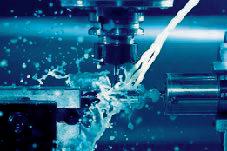











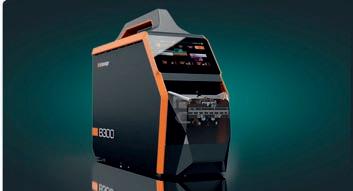







VENDOR: BEAGLEBOARD.ORG FOUNDATION
BEAGLEBONE AI-64 SINGLE BOARD COMPUTER
BeagleBone AI-64 is a single board computer based on Jacinto TDA4VM Arm Cortex-A72 processor to enable rapid prototyping and development of edge computing systems such as AI-enabled vision processing and robotics.



The complete system can be used for developing artificial intelligence (AI) and machine-learning solutions with the convenience and expandability of the BeagleBone platform and onboard peripherals to start learning and building applications. Using locally hosted, ready-to-use, open-source focused tool chains and development environment, a web browser, power source and network connection are all that is required to start building performance-optimized embedded applications.
Industry-leading expansion possibilities are enabled through familiar BeagleBone cape headers, with hundreds of open-source hardware examples and dozens of embedded expansion options readily available off the shelf.
Example design applications = Machine vision - vision computers, Industrial & collaborative robots – CPU for robotic arms, Industrial Mobile Robots – AGV/AMR

• TDA4VM SoC
TPS6594-Q1 companion PMICs
• DP83867CR Ethernet PHY
• TUSB322I USB-C port controller
• TUSB8041 4-port USB3.0 Hub
• Additional TI Analog Power and Analog Signal Chain ICs
• BeagleBone Black header compatibility
4GB RAM and 16GB on-board eMMC flash with high-speed interface
• USB type-C for power and superspeed dual-role controller; and 2x USB superspeed type-A hosts
• Gigabit Ethernet, M.2 E-key for WiFi/BT expansion
• miniDisplayPort, 2x 4-lane CSI, DSI
Zero-download out-of-box software experience with Debian GNU
The dev boards enable rapid prototyping and development of edge computing systems.

Scan here to view see more information. https://beagleboard.org/ai-64
The dev boards allow for such designs as AI-enabled vision processing and robotics.










Traditional industrial Ethernet, fiber-optic networks, 5G, and other modern communication methods share one common requirement: Consistent quality in data transmission depends on the reliability of all cables and connector components. Modular standardized connectors enable the flexible and e cient design of automation solutions with real-time communication. As a leading supplier for device manufacturers, Phoenix Contact provides the right data connection for your applications, both on the device and in the field.
To see our full range of data connectivity products, visit www.phoenixcontact.com/leading-data-connectivity



















Hammond has over 20 million dollars of in-stock inventory and over 16,000 unique product skus to choose from.
Low voltage power transformers, high-end audio transformers and chokes, medical grade isolation.
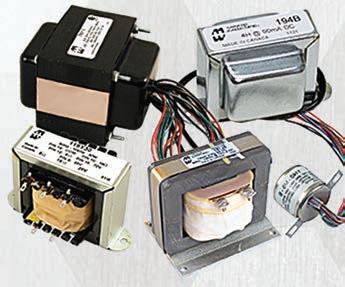
Diecast aluminum, extruded aluminum, and plastic enclosures in thousands of sizes and configurations.


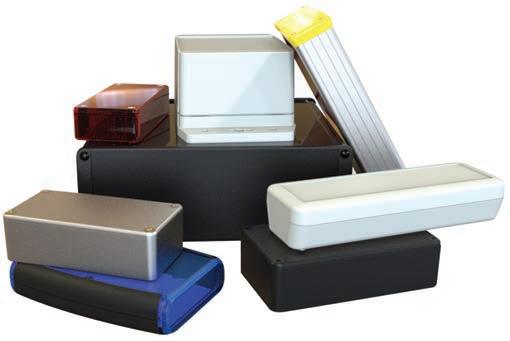





Junction, wall mount, and freestanding enclosures in painted steel, stainless steel, aluminum and non-metallic.
15A and 20A heavy duty outlet strips for commercial/industrial, rack mount, and benchtop applications.


19” racks, cabinets, and accessories for test & measurement, data communications and more.
